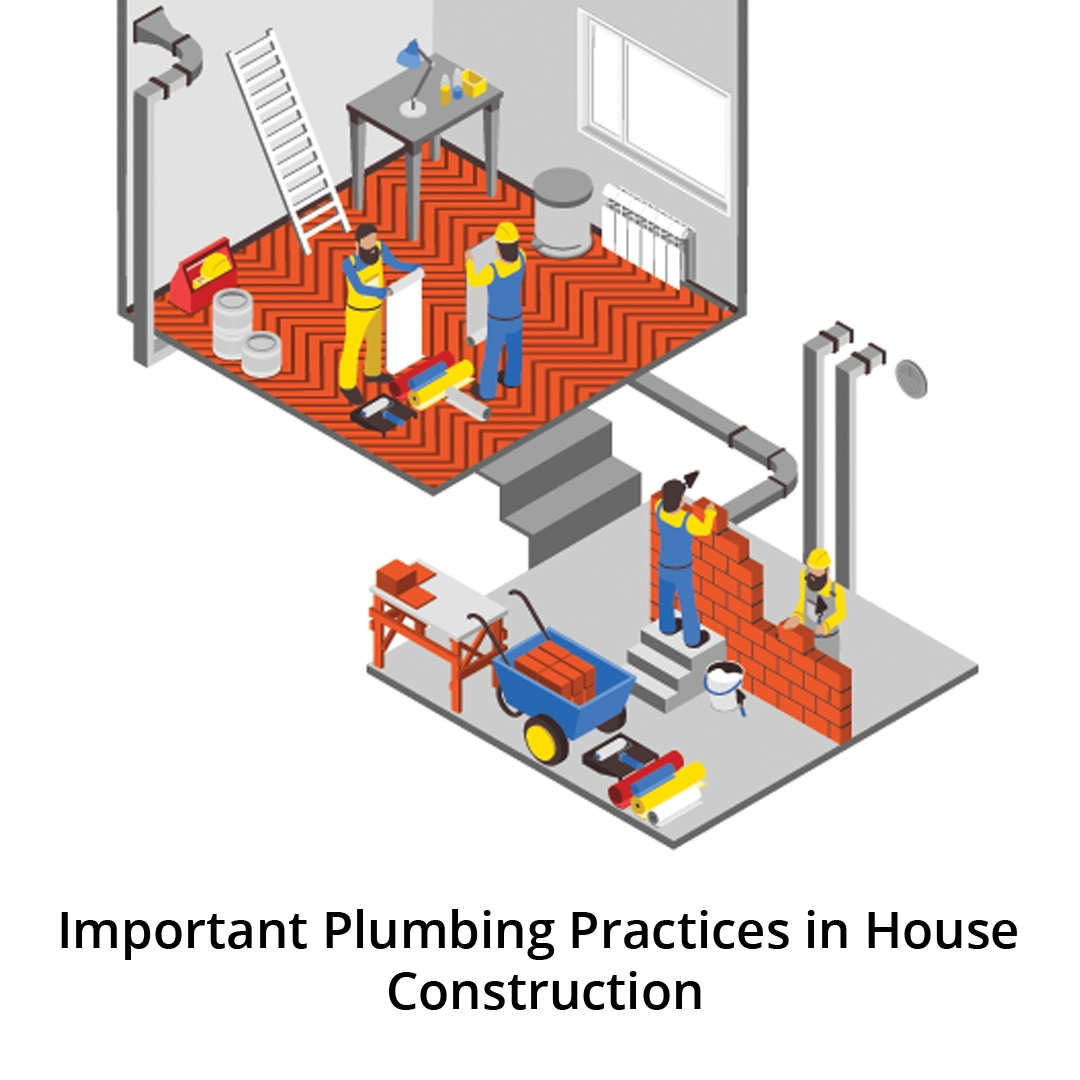Plumbing is one of the most crucial aspects of home construction, along with mechanical and engineering. The whole plumbing system includes pipe fittings, fixtures, water supply, drainage, storage tanks, control valves, etc. All of these aspects of the water system work together to ensure a smooth supply of water at each outlet and, are directly related to the overall hygiene of a house.
We know how inconvenient it is when there is a low water pressure or an impairment like water leakage, clogged drains, sump pump failure, or others. A malfunction in the plumbing system can result in blockage of sewage and wastewater, ultimately leading to build-up and exposing you and your family to significant health issues.
The basic operation of plumbing supply is to deliver freshwater through pipes from a reservoir to bathrooms, sinks, and kitchens including other fixtures, and after its usage, drain the used water to sewers or septic tanks and further to the local sewage system where it is treated.
There are four main plumbing systems installed in your home, namely, the water supply system, drain-waste-vent system, bathroom plumbing, and kitchen plumbing system. Plumbing installation also includes fitting of softeners, sinks, water heaters as well as pipes of different sizes according to the requirement. The following concepts are among the most essential ones to understand at a time when your new home is undergoing plumbing work.
Septic Tanks
Placing a septic tank in a new house is quite a challenge for any plumber. It plays an essential role in the collection of all the waste generated from household activities and, the prevention of residents from toxic substances. The construction and placement of a septic tank are vital as it affects the energy flow inside your home. Its ideal position should be in the North-West corner according to Vaastu, irrespective of the direction of your house.
The pipes used in drainage should be airtight as well as durable so that they can cope with the toxicity of liquid waste. Earlier these tanks used to be made manually, but now they are available in precast forms too which can be easily used by your plumber. The wastewater collected in these tanks gets transported to the sewer line of the city. However, in the absence of these standard sewage lines, the plumber is responsible to construct a soak pit(which is a secondary chamber that enables liquid waste to move to nearby soil) where the trash can be collected and processed naturally.
Underground Water Tanks
An underground water tank is your home’s reservoir for clean and fresh water which is carried to overhead tank through pumps. The capacity of such tanks is determined by the size of building and the people living inside it. Per capita water demand in an average Indian household is 135 liters per day, therefore the tank size should be chosen accordingly. It should be positioned in the North-East area of the house as per Vaastu guidelines.
Underground Water Tanks are an integral part of the water supply system in house construction, as along with storing water they can be used to suppress an outburst of fire or put to good use when the borewell gets damaged.
Pipes of different types
Your house’s plumbing system may look like a complex arrangement of different sizes and types of pipes, but things will definitely get easier if you put some effort into understanding that system. The nature and size of the pipe determine the purpose for which it has to be used. The pipes fit for distribution of potable water across your house through faucets are mostly UPVC pipes and for outflow of waste to drainage, PVC pipes are an ideal choice. The brands worth mentioning among others that deal in different water supply pipes are Supreme Industries, Finolex Industries, Ashirvad Pipes, Ori-Plast Limited, and Astral Pipes.
Why is Water Harvesting Important?
Good plumbing practices always include rainwater harvesting. More than just a part of plumbing requirements, it is a great way of storing rainwater as well as a savior at times of water shortage. The water harvesting system is a whole process of collecting, filtering, storing, and treating surface water. Rainwater collected on any flat surface like a terrace or roof is termed a catchment and is transported down to a storage vessel through PVC pipes that should be UV resistant. The rainwater tanks should be designed, placed, and maintained in a manner that they have a cross connection with the potable water supply. Filtration is done to effectively remove contaminants and viruses and make the water fit for use.
Many people are still unaware of this important concept that drives us toward sustainable living. Rainwater harvesting should be planned much before the start of the plumbing stage so that the installation can take place effectively and in harmony with the whole water supply system.
Make My House assists you with all of these aspects in your house construction process and takes care of all your distinct needs in each possible way.












Thanks for sharing